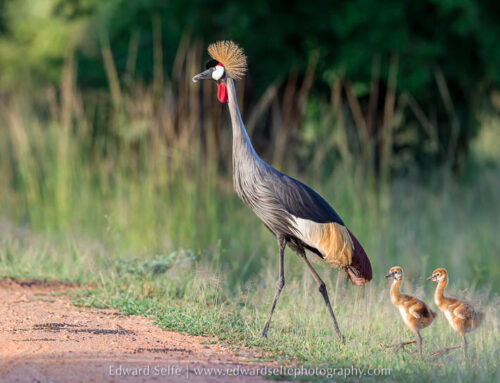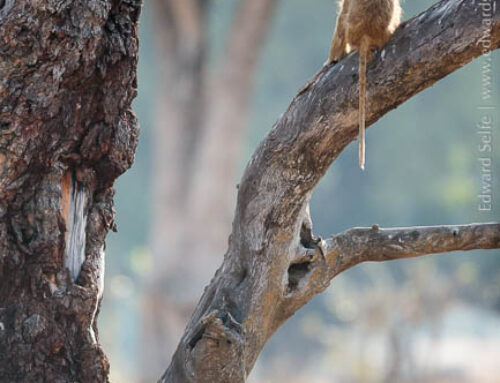Carmine bee-eaters are found right across Central, Eastern and Southern Africa. The Northern species extends from Senegal to Somalia and down through Kenya; the Southern species – which visit us in the Luangwa – are found from southern DRC across to western Tanzania and down to the the northern parts of South Africa.
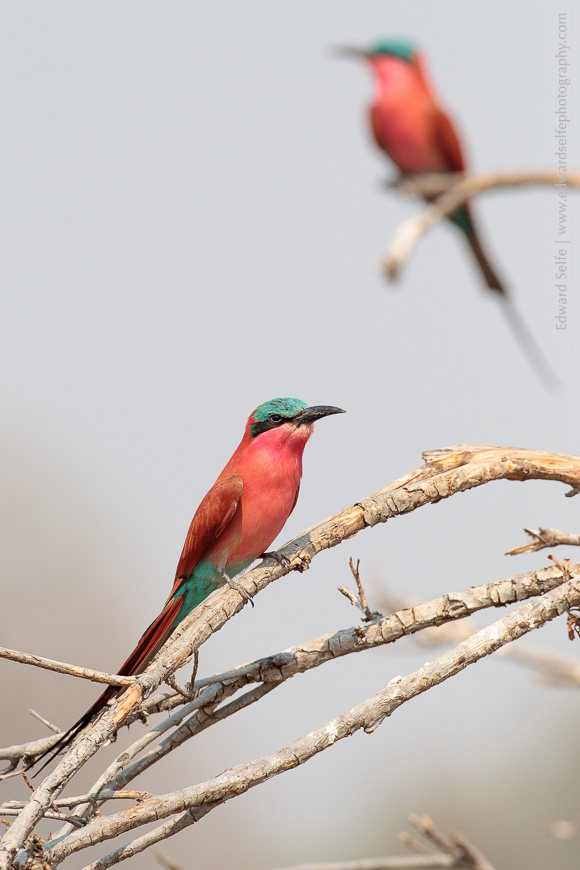
They are unmistakable! Apart from their Northern cousins – which have a green face – there is no other bird that resembles them. Each year, they start to appear in Luangwa in the early dry season and announce their arrival with loud resonant “terk, terk, terk” calls from high in the sky.
Initially, they are scattered throughout the woodland, hawking for large insects which form the basis of their diet. But as the dry season intensifies, and the river level drops, they start to congregate along the banks, seeking out suitable nesting sites. They require steep, solid sand river banks into which they can burrow a long tunnel; the bank must be soft enough to excavate but cohesive enough not to collapse even when hundreds of birds burrow 2-metre-long tunnels into it!
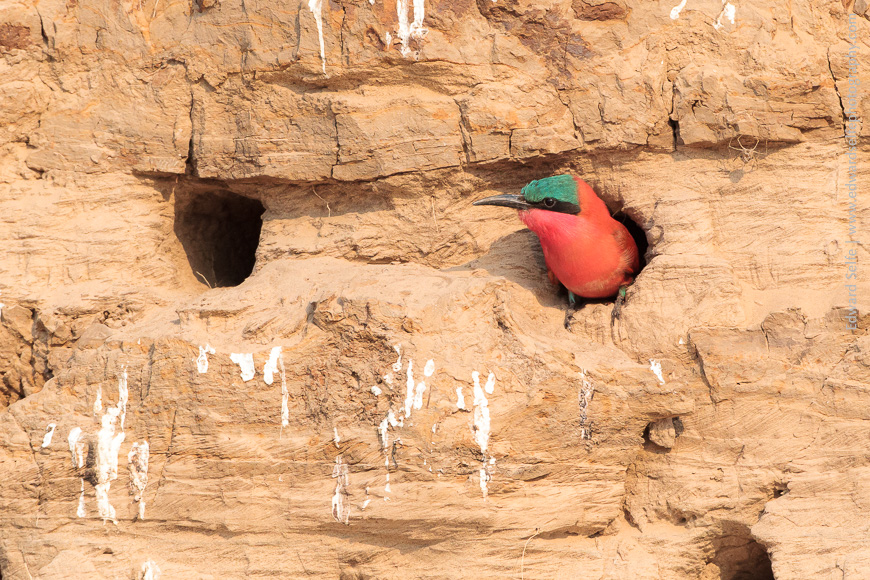
These steep banks give the birds’ nests protection from predators – such as baboons and raptors – which would attack either the eggs or the chicks. During the best-building process, there are often squabbles over real-estate as they all compete for the prized spots.
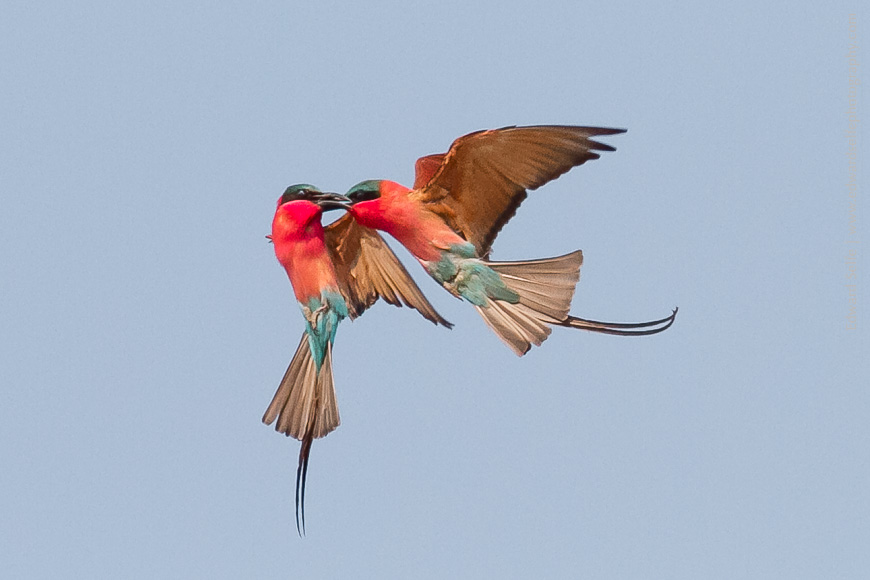
Once the nests are dug, the females lay a clutch of 1 – 3 eggs which they incubate. The males continue hawking for insects and delivering them back to the nests.
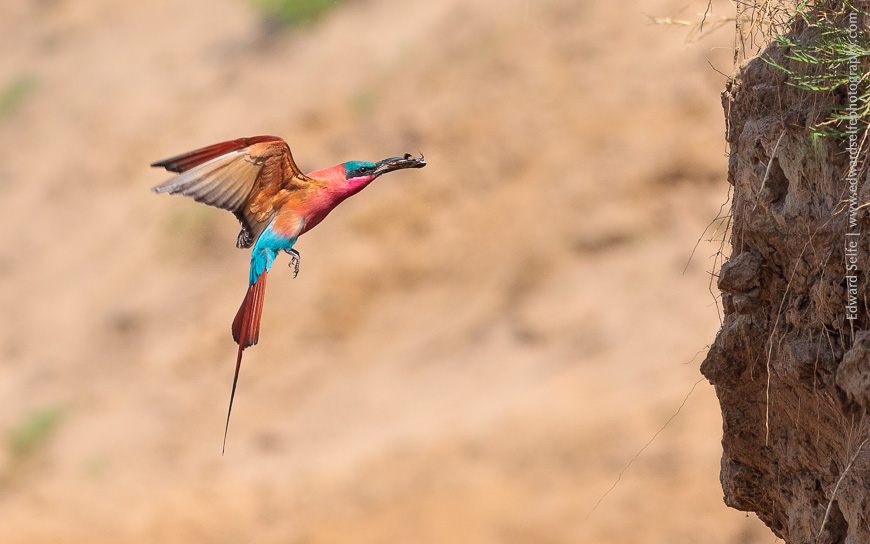
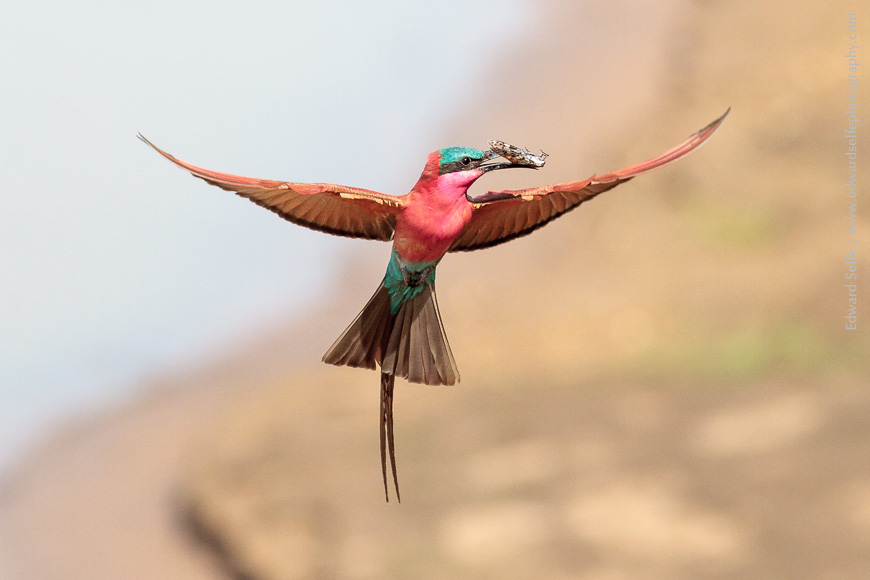
The Carmines are most active in the morning and evening when it is cool, and are often found resting in shady trees during the hottest hours. Since their activities often coincide with the Sausage trees’ new leaf growth, we enjoy a vivid combination of crimson reds and intense greens!
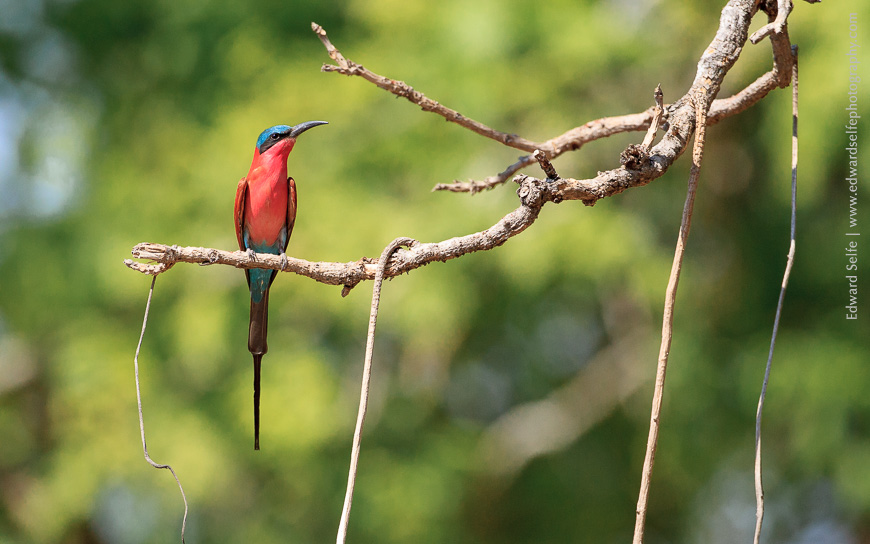
When the chicks hatch the adults both hunt to feed the youngsters and the colony becomes and very busy place! Birds come and go throughout the day, and opportunist predators such as Yellow-billed Kites swoop in and attempt to snatch anyone who isn’t paying attention! As the remaining birds erupt from the bank in flight, there is a moment when the air is filled with noisy squawks and crimson wing-beats.
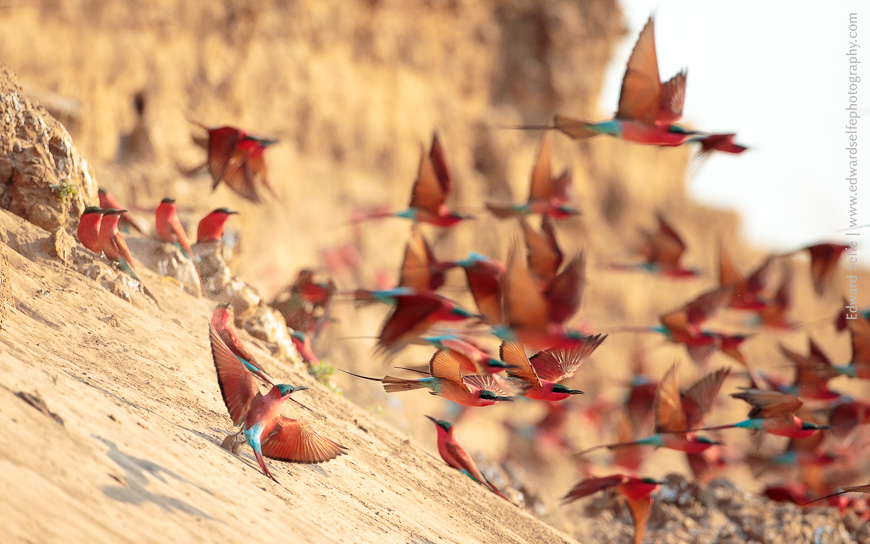
And then, after all frenzied activity, the adults begin to depart with their fledged youngsters. Some juveniles – and a number of adults – choose to stay behind and can be seen throughout the rainy season in the mopane forests until the rest of the population re-join them the following season.
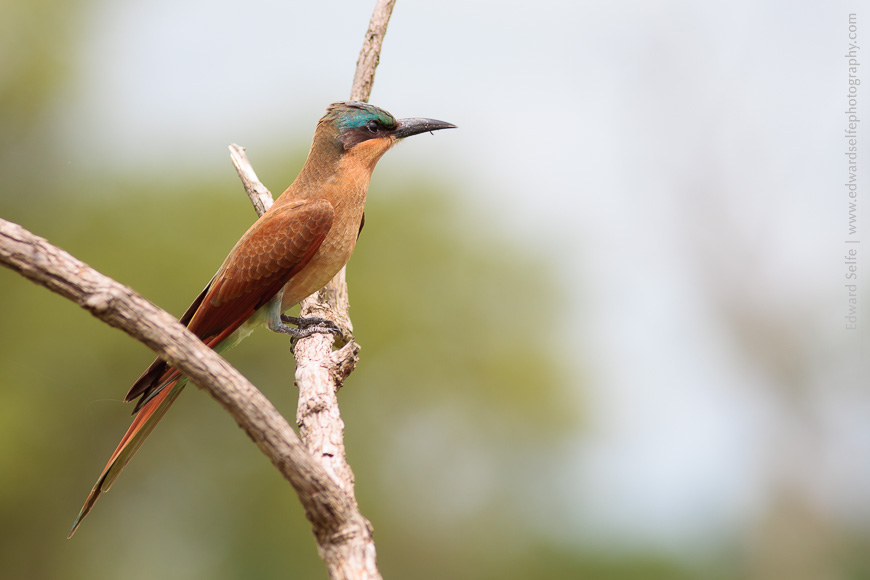
The annual visit of the Carmines is really something to behold; the drama begins in August, extending and intensifying through September and October before the rains bring an end to the breeding season in November.


